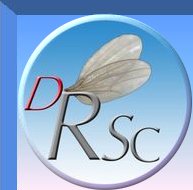
Drosophila RNAi Screening Center
at Harvard Medical School


|
Drosophila RNAi Screening Centerat Harvard Medical School |

|
|
|
|
|
HOME
ABOUT US SCREENING APPLICATIONS METHODS PAPERS FINISHED SCREENS GENE LOOKUP and TOOLS LINKS SITE MAP EQUIPMENT SIGN-UP |
|
|
To develop a high throughput screen, a cell-based assay must be adapted to a 384-well assay plate format. Different types of plates are available, depending on the assay detection method. For example, white, solid bottom plates are used for luminescence assays and black, clear-bottom plates for visual and fluorescence assays. For additional information, please see Recommendations for Designing a RNAi Screen.
Antibody-based screens: This approach can be generalized to any assay that relies on following the expression or localization of a protein for which a good, specific antibody is available. Another powerful application of antibody-based screens involves the use of phospho-specific antibodies to monitor the activity of the relevant pathway under basal or stimulated conditions. Provided that the specificity of the phospho-antibodies is good, these screens are highly quantitative, and can be performed using a platereader to measure overall levels of fluorescence emitted by the fluorescently-coupled secondary antibody, or a modified laser-based microscope that excites and scans in the far-red the emission from appropriately-conjugated secondary antibodies bound to the primary, phospho-specific antibody. Not all image-based screens rely on the use of antibodies. Cellular compartments or structures (e.g., Golgi, mitochondria, nuclei, actin filaments) can be selectively labeled with either fluorescently labeled dyes or GFP proteins tagged with the appropriate localization tag. Alternatively, specific cell types in primary cultures can be marked by ectopically expressing GFP or YFP proteins under the control of the appropriate cell-type specific promoter allowing HCS analyses on the morphology and cell integrity of specific cells among a complex mixture of otherwise unlabeled cells. Also, when designing your assay, please keep in mind the capabilites of the machinery. You can use this spectra to help you in choosing which dye to use for your assay. http://probes.invitrogen.com/resources/spectraviewer/ Two important issues to consider during assay development are the signal/background ratio (S/B), and well-to-well variability (CV). As assay variability increases, the S/B ratio must increase for the screen to be successful. We recommend preparation of a positive control to determine the S/B ratio. To determine CV, fill a plate with reagents using the same equipment to be used for the screen. Spike several wells with your positive control, and determine whether you can reproducibly detect your positive control above the well-to-well variation. This data will give you an indication of the false-positive and false-negative rate of your assay.
Groups who are interested in carrying out screens at the DRSC will be charged $3,000 per screen to offset some of the costs related to the production and aliquoting of the dsRNA library. In addition, they are expected to cover expenses for all supplies used in their high throughput assays (plates and other plastic ware, tissue culture reagents, biological or biochemical reagents, etc.). In the section below, we provide a rough estimate of some of the costs typically associated with screens. 1) Cost-estimate for supplies1
1 Estimate based on
one screen using 2 genome sets (duplicate) 2) Cost-estimate for reagents The cost of reagents will depend on your type of screen. Luciferase-based plate reader screens using
Dual-Glo reagent (Promega) will require 1L of reagent
for each screen. Additional reagent might be required
for preliminary experiments. Fluorescence-based screens will depend on the cost of your antibodies and/or stains and the volume required. The following formula can be used to calculate the volume of all reagents required to screen the entire genome set one time for any type of screen
If you are doing a plate reader screen, you will then multiply by 2 for screening the genome in duplicate. Most visual screens require only one genome. While the above formula allows for extra reagent, it is advised to have additional reagent on hand. For your screen data, you will need to bring the following data storage devices with you:
Screening data should also be saved directly into your DRSC database account. Detailed instructions for importing your data into the DRSC screening database will be provided after your preliminary screen is completed. Once data is entered into the database, instruction will be provided as to how to view your data. It is the responsibility of the researchers to analyze the results of their screen. |
|
|||||||||||||||||||||||||||||||||||||||||||||||||||||||||||||||||||||||||||||||||||||||||||||